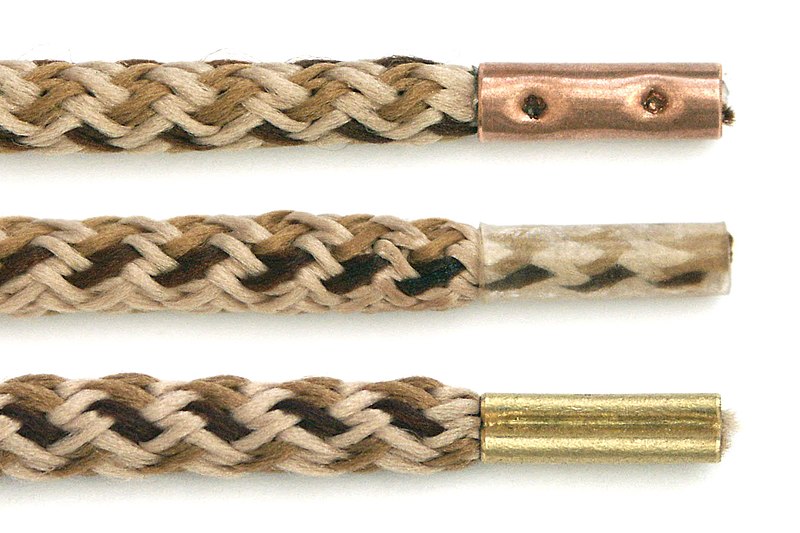What is the End of a Shoelace Called? A Comprehensive Guide
The end of a shoelace, often overlooked, plays a crucial role in the functionality of shoelaces and the ease of lacing shoes. This small component is known as an aglet. While it may seem insignificant, the aglet serves several important purposes, including preventing fraying, making lacing easier, and enhancing the overall aesthetic of the shoelace. In this article, we will explore the history, function, types, and significance of aglets in detail. We will also provide a FAQ section and a summary table for quick reference.
1. Understanding Aglets
1.1 Definition of Aglet
An aglet is a small plastic or metal sheath that is placed at the end of a shoelace (or cord) to prevent it from fraying and to make it easier to thread through eyelets. The term “aglet” comes from the French word “aiguillette,” which means “small needle.”
1.2 Historical Background
The use of aglets dates back to ancient times. The earliest known aglets were made from materials such as metal, leather, or fabric. In Ancient Rome, aglets were used to fasten clothing and ribbons, often crafted from precious metals like brass or silver. The evolution of aglets has led to the modern plastic and metal versions we see today.
1.3 The Function of Aglets
Aglets serve several important functions:
- Preventing Fraying: The primary purpose of an aglet is to prevent the ends of shoelaces from fraying. Without aglets, shoelaces would unravel, making them difficult to use.
- Facilitating Lacing: Aglets make it easier to thread shoelaces through the eyelets of shoes. The stiffened end allows for smoother lacing and helps the lace glide through the holes.
- Enhancing Aesthetics: Aglets can also add a decorative touch to shoelaces. They come in various colors, materials, and designs, allowing for personalization and style.
2. Types of Aglets
Aglets come in different materials and designs, each serving specific purposes. Here are the most common types:
2.1 Plastic Aglets
Plastic aglets are the most common type found on modern shoelaces. They are lightweight, durable, and cost-effective. Plastic aglets are typically molded onto the end of the lace using heat or adhesive.
2.2 Metal Aglets
Metal aglets are less common but are often used in high-quality shoelaces. They provide a more luxurious look and feel. Metal aglets can be made from materials such as brass, aluminum, or stainless steel. They are often crimped onto the lace to secure them in place.
2.3 Fabric Aglets
Fabric aglets are made from the same material as the shoelace itself. They are often used in casual or handmade shoelaces. Fabric aglets can be sewn or glued to the end of the lace to prevent fraying.
2.4 Custom Aglets
Some shoelace manufacturers offer custom aglets that can be personalized with logos, designs, or colors. These are often used in promotional items or branded merchandise.
3. The Importance of Aglets in Footwear
Aglets may seem like a minor detail, but they play a significant role in the functionality and durability of shoelaces. Here are some reasons why aglets are important:
3.1 Durability
Aglets help extend the life of shoelaces by preventing fraying. Without them, shoelaces would wear out more quickly, leading to the need for frequent replacements.
3.2 Ease of Use
Aglets make it easier to lace up shoes, especially for children or individuals with limited dexterity. The stiffened end allows for smoother threading through eyelets, reducing frustration during the lacing process.
3.3 Style and Customization
Aglets can enhance the overall look of footwear. With various colors and designs available, they allow for personalization and can complement the shoe’s style.
4. How to Replace a Lost Aglet
Losing an aglet can be frustrating, but there are several ways to replace it. Here are some common methods:
4.1 Using Tape
If you lose an aglet, you can wrap a small piece of tape around the end of the shoelace to create a temporary aglet. This will help prevent fraying until you can replace it properly.
4.2 Heat Shrink Tubing
Heat shrink tubing can be used to create a new aglet. Cut a small piece of tubing and slide it over the end of the shoelace. Use a heat source to shrink the tubing, securing it in place.
4.3 Glue
Applying a small amount of glue to the end of the shoelace can help prevent fraying. While this method does not create a true aglet, it can serve as a temporary fix.
4.4 Purchasing Replacement Aglets
Many craft stores or online retailers sell replacement aglets. You can purchase metal or plastic aglets and attach them to your shoelaces using a crimping tool or adhesive.
5. Summary Table of Aglet Information
| Feature | Description |
|---|---|
| Definition | The plastic or metal tip at the end of a shoelace |
| Historical Use | Used since ancient times to fasten clothing and ribbons |
| Common Materials | Plastic, metal, fabric |
| Functions | Prevent fraying, facilitate lacing, enhance aesthetics |
| Replacement Methods | Tape, heat shrink tubing, glue, purchasing replacement aglets |
6. FAQ Section
1. What is the end of a shoelace called?
The end of a shoelace is called an aglet.
2. Why are aglets important?
Aglets prevent shoelaces from fraying, make it easier to lace shoes, and can add a decorative touch.
3. What materials are aglets made from?
Aglets are commonly made from plastic, metal, or fabric.
4. How can I replace a lost aglet?
You can replace a lost aglet by using tape, heat shrink tubing, glue, or by purchasing replacement aglets.
5. Can I customize aglets?
Yes, some manufacturers offer custom aglets that can be personalized with logos or designs.
Conclusion
Aglets may be small and often overlooked, but they play a vital role in the functionality and aesthetics of shoelaces. Understanding what aglets are, their history, and their importance can enhance your appreciation for this simple yet essential component of footwear. Whether you’re looking to replace a lost aglet or simply want to learn more about shoelaces, this guide provides a comprehensive overview of everything you need to know.For further information on aglets and their history, you can refer to the Wikipedia page on Aglet.



